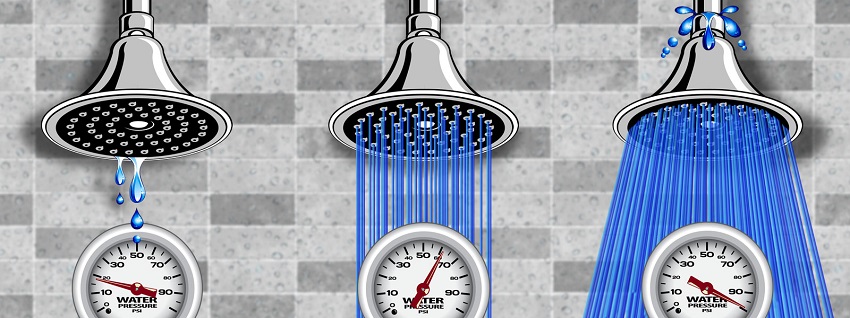
20 Aug What is the Maximum Pressure of a Hose Pipe?
Hey there, fellow curious minds! Have you ever wondered about the remarkable power that a simple hose pipe can unleash? Well, you’re in for a treat, as we dive into the fascinating world of hose pipes and uncover the maximum pressure they can handle. Buckle up and get ready to be amazed by the science and engineering behind these everyday marvels. This content is presented by Healthyhouseplans.com.
The Basics: Hose Pipes Unveiled
Hose pipes, those trusty companions for our gardening and cleaning endeavors, are more than meets the eye. They are versatile tools designed to transport liquids from one place to another with ease. Whether it’s water for your garden, cleaning solutions for your car, or even fuel for machinery, hose pipes play a crucial role.
The Anatomy of a Hose Pipe
Before we explore the maximum pressure a hose pipe can handle, let’s take a peek at its anatomy. A typical hydraulic hose pipe comprises three main layers:
- Inner Tube: This is where the liquid flows. It’s usually made of materials like rubber or PVC (polyvinyl chloride) to ensure flexibility and resistance to the transported liquid.
- Reinforcement Layer: This layer adds strength to the hose pipe, preventing it from collapsing or bursting under pressure. It’s often composed of materials like polyester or steel wire.
- Outer Cover: The outer layer shields the hose pipe from environmental factors, such as sunlight, abrasions, and chemicals. It’s designed to enhance durability and prolong the hose’s lifespan.
Pressure and Performance: How Much Can a Hose Pipe Handle?
Alright, let’s get down to the nitty-gritty – the maximum pressure a hose pipe can withstand. The pressure capacity of a hose pipe varies depending on its design, material, and construction. Generally, hose pipes are classified by their working pressure and burst pressure.
Working Pressure
The working pressure of a hose pipe refers to the maximum pressure it can handle while in operation. This is the pressure that the hose can consistently endure without any risk of failure. Working pressures can range from as low as 150 psi (pounds per square inch) for light-duty hoses to over 1000 psi for heavy-duty industrial hoses.
Burst Pressure
Burst pressure, on the other hand, is the absolute maximum pressure a hose pipe can withstand before it ruptures or bursts. This is a critical value to consider, as it indicates the breaking point of the hose. Burst pressures are significantly higher than working pressures, often being two to four times greater. For instance, a hose with a working pressure of 300 psi might have a burst pressure of 1200 psi.
Factors Influencing Maximum Pressure
Several factors come into play when determining the maximum pressure a hose pipe can handle:
1. Material Composition
The materials used in the hose pipe’s construction play a significant role. Reinforcements like steel wire enhance its strength, while the quality of the inner tube material affects its resistance to the transported fluid.
2. Hose Diameter
The diameter of the hose pipe impacts its pressure-handling capability. Generally, larger-diameter hoses can handle higher pressures due to the increased internal area for fluid flow.
3. Temperature
Extreme temperatures can affect the hose’s elasticity and overall integrity. Hoses designed for high-temperature applications often have different materials and construction to withstand thermal stress.
4. Fluid Type
The type of liquid being transported also matters. Corrosive chemicals or abrasive materials can degrade the hose over time, reducing its pressure tolerance.
You may like to read: The Role of a Plumbing Company in Maintaining Water Efficiency
Safety Measures and Maintenance
While understanding the maximum pressure of a hose pipe is essential, ensuring safety during usage is paramount. Here are some tips to keep in mind:
- Regular Inspection: Check your hose pipe for signs of wear, such as cracks, bulges, or leaks. Replace any damaged hoses promptly.
- Pressure Regulation: Always operate the hose within its recommended working pressure to avoid potential bursts.
- Avoid Twisting: Twisting the hose can lead to kinks and pressure points, weakening the hose over time.
- Proper Storage: Store hoses away from direct sunlight and extreme temperatures to extend their lifespan.
Conclusion
And there you have it – the ins and outs of hose pipes and their maximum pressure capabilities. From delivering water to nurturing your plants to aiding in industrial processes, hose pipes are unsung heroes of convenience and efficiency. Remember to respect their limits, maintain them well, and they’ll be your reliable companions for years to come.
So, next time you turn on that hose to water your garden or wash your car, you can appreciate the engineering marvel that stands behind the simple yet powerful hose pipe. And remember, whenever you’re in need of quality hose pipes or advice on their proper usage, you can always count on trusted suppliers and experts in the field, ensuring your tasks are tackled with utmost precision and safety.

Sorry, the comment form is closed at this time.